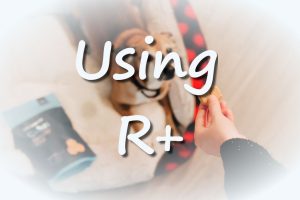Many dog owners are taken by surprise when their furry friends experience separation anxiety. It’s not just a behavioral quirk; it can be a distressing issue for both the dog and the owner. Understanding the roots of this anxiety starts with looking at the owner’s behaviors and how they can shape their pet’s emotional well-being.
Owner behaviors, such as inconsistent routines, excessive comforting, and lack of independence training, can significantly influence a dog’s susceptibility to separation anxiety. There’s much more to explore about how these actions can create either a support system or a source of stress for our pets, so stick around to unveil how simple changes can lead to happier dogs.

How Does Attachment Style Affect Separation Anxiety?
A dog’s attachment style to its owner plays a crucial role in how they handle being alone. Dogs that form strong attachments can experience heightened anxiety when their owners leave. This is particularly true for those with a secure base style—these pups see their owners as their main source of comfort. When left alone, they may panic, believing something’s wrong or that they’ll never return.
Conversely, dogs with a secure attachment tend to show less anxiety. This can stem from the owner’s actions; for example, providing plenty of positive reinforcement and social interactions can foster this secure bond. It’s about balance. If you’re always hovering over your pup, it might lead to dependency, making it harder for them to cope with separations. Encouraging independent playtime can help cultivate resilience and soothe that anxiety when you’re not around.
To support your furry friend’s emotional health, consider these strategies:
- Practice short separations: Start with a few minutes, gradually increasing the time you’re apart.
- Avoid emotional goodbyes: Keep departures low-key; avoid long farewells to prevent building anxiety around the event.
- Create a safe space: A designated area with toys and comforts can help them feel secure while you’re gone.
By fostering a healthy attachment and building confidence, you can help ease those anxiety levels when it’s time to leave.
What Role Does Daily Routine Play?
Dogs thrive on routine. Establishing a consistent daily schedule not only creates a sense of stability but also helps ease anxiety when left alone. Dogs are creatures of habit, and having set times for feeding, walks, play, and rest can give them a comforting sense of predictability.
Predictable routines can diminish feelings of uncertainty which can exacerbate anxiety in dogs. For example, if your dog knows they’ll get their morning walk at a certain time or that playtime follows dinner, it can help them relax and anticipate what comes next.
Key aspects of a successful routine include:
- Regular feeding times: Consistency helps dogs understand when they’ll eat.
- Scheduled exercise: Daily walks and play sessions help use up energy and promote tiredness, which can reduce anxiety.
- Structured quiet time: Provide a clear downtime where they know they can unwind and rest.
Additionally, you might consider engaging in activities like interactive toys or puzzles during your absences. This not only engages their mind but also distracts them from your departure. Plus, giving them something fun to do while you’re away can be a game-changer.
Check out this informative resource on creating routines for dogs from the American Kennel Club: AKC – Dog Training. This can help you ensure that your pup stays happy and balanced, even when you’re out of sight.
Can Over-Coddling Make Things Worse?
Over-coddling can create a false sense of security for both dog and owner. While it’s natural to shower your pup with affection, constant attention can lead to increased dependence, making it hard for them to cope when you’re away.
Dogs thrive on a bit of independence. If you’re always hovering or rushing to soothe them at the slightest whimper, it may reinforce their anxiety rather than alleviate it. Instead, try encouraging moments of self-sufficiency. For example, consider allowing your dog to settle in their own space rather than being right beside you all the time. Practicing alone time, even if just for a few minutes a day, can promote confidence.
Here are a few specific behaviors to rethink:
– Immediate Reactions: Responding instantly when your dog shows distress can set a precedent that their anxiety will always lead to your presence.
– Constant Physical Contact: While petting is great, avoid turning it into a constant need. Gentle petting before you leave can be loving, but make sure it’s not a prolonged session that heightens their expectations.
– Demanding Attention: If your dog barks or nudges for your attention and you always give in, you’re teaching them that anxiety gets rewarded.
By letting your dog navigate their own emotions occasionally, you promote healthier coping mechanisms as they learn that it’s okay to be alone.
How Important Is Training in Building Independence?
Training isn’t just about teaching commands; it’s a tool that nurtures a dog’s ability to handle solitude without panicking. Engaging your dog in task-based activities helps them build confidence.
The right training methods can significantly ease separation anxiety by fostering self-reliance. Techniques like incorporating “stay” and “place” commands encourage your dog to feel secure in their spot, even when you’re out of sight. Practice these commands gradually, starting with very short periods of separation and extending them as your dog becomes more accustomed.
A few effective training strategies include:
– Desensitization: Gradually increase the time you spend away from your dog. Start with just a few minutes, engaging in a calm departure routine that doesn’t reinforce anxiety.
– Positive Reinforcement: Reward your dog when they remain calm during separations. This builds an association between your leaving and good feelings — which is key in reducing anxiety.
– Structured Play: Incorporating puzzle toys or interactive games can keep them occupied and mentally stimulated while you’re gone.
Beyond basic commands, consider the benefits of enrolling your dog in socialization classes or training refreshers, which can expose them to new environments and situations, nurturing their independence further.
Training not only creates a more confident dog but also strengthens the bond between you. Learning together makes for a happier, less anxious pup thriving in their independence.
What Signals Are Dogs Sending When They Feel Anxious?
Recognizing signs of separation anxiety in dogs is crucial to understanding their emotional needs. Many dogs communicate their discomfort through a variety of behaviors. Watch for these common signals:
- Excessive Barking or Howling: This vocalization often signifies distress. It’s your dog’s way of expressing that they’re unhappy when left alone.
- Destructive Behavior: Chewing on furniture or other household items can indicate anxiety. When left alone, some dogs resort to destructive actions to cope with feeling abandoned.
- Pacing or Restlessness: If you notice your furry friend constantly moving or unable to relax, it’s a clear sign of anxiety.
- Drooling or Panting: Stress may manifest through physical signs like drooling or heavy breathing, particularly during separation.
- Withdrawal or Hiding: Dogs may seek out a safe space, like under a bed or in a closet, when they sense anxiety creeping in.
By paying attention to these behaviors, you’ll get a clearer picture of your dog’s emotional state. It’s essential to respond to these signs with empathy, as they can’t express their feelings in words.
How Does an Owner’s Mood Influence Their Pet?
A pet’s emotional well-being is often inextricably linked to their owner’s mood. Dogs are incredibly attuned to their humans’ emotions, picking up on subtle cues and body language. If you’re feeling stressed, it can ripple out to your pup.
For instance, if an owner often exhibits anxiety, their dog might mirror that unease through similar anxious behaviors. This can create a cycle where the owner’s anxiety increases due to their dog’s distress, further exacerbating the problem. On the flip side, a calm, confident owner can foster a sense of security in their dog.
Here are a few ways to ensure your emotional state positively affects your dog:
- Maintain a Routine: Dogs thrive on consistency. Stick to a regular schedule for walks, meals, and playtime to provide stability.
- Stay Calm During Departures: Practice a cheerful yet low-key approach when leaving or arriving home. If you show anxiety, your dog may pick up on it.
- Use Positive Reinforcement: Reward your dog for calm behavior and practice training exercises that can bolster their confidence.
A unique insight is understanding the rippling effect of your interactions. For instance, if you often comfort your dog during anxious moments, it may unintentionally reinforce their fears. Instead, create a space of comfort without overindulgence. A balanced approach can help them learn to cope independently.
Understanding your role in your dog’s emotional landscape can make a world of difference in their behavior and overall well-being. For further reading on the human-animal bond, check out the ASPCA’s resource on pet behavior.
What Are Practical Tips for Easing Separation Anxiety?
Helping your dog cope with separation anxiety often starts with our own behaviors. Here are some practical strategies that can truly make a difference:
Start Small : Leave your dog alone for just a few minutes, gradually increasing the time away. This helps them learn that you will always come back.
Create a Positive Environment : Equip their space with interactive toys or special treats that they’ll only get when you’re gone. This helps turn loneliness into a fun time.
Desensitize Departures : Try to make your goodbyes as uneventful as possible. Don’t make a big fuss when you’re leaving or when you come back. Calmness during these times helps them feel secure.
Establish a Routine : Dogs thrive on consistency. Having a predictable daily routine can reduce anxiety. Schedule playtime, walks, and training sessions at the same times each day.
Practice Short Absences : Incorporate brief departures into your routine. Even if you’re just stepping out for coffee, it sends a message that you’ll always return.
Calm Your Dog Before Leaving : Engage in a relaxing activity, like gentle petting or a low-key game, before you leave. This sets a soothing tone and helps them feel calm.
Consider Crate Training : A crate can provide a safe, snug space. If introduced carefully, it can help your dog feel secure, similar to a den.
Seek Help from Professionals : Don’t hesitate to consult a dog trainer or a veterinary behaviorist for personalized strategies. Sometimes, medications might be necessary to alleviate extreme anxiety.
Implementing these strategies can ease your dog’s separation anxiety and improve their overall well-being.
What Interesting Facts Exist About Separation Anxiety in Dogs?
Separation anxiety isn’t just common; it’s quite complex and can manifest itself in different ways depending on the dog’s personality and background. Here are some intriguing insights into this condition:
Prevalence : It’s estimated that about 20-40% of dogs seen by veterinarians or animal behaviorists are affected by separation anxiety. That’s a significant number!
Not All Breeds Are Equal : Certain breeds, particularly those known for their strong attachment to humans, tend to be more susceptible. Labrador Retrievers, German Shepherds, and Border Collies often rank high on the anxiety scale.
Age Matters : Puppies are not the only ones affected; adult dogs can develop separation anxiety due to changes in their environment, like moving to a new home or a loss in the family.
Signs to Look For : Beyond barking or whining, anxiety can present itself through behaviors like destructive chewing, excessive drooling, or even attempting to escape when left alone.
Physical Symptoms : Anxiety can lead to stress-induced medical issues, such as gastrointestinal upsets or skin problems.
Emergency Situations : Post-traumatic stress can also contribute, especially in rescue dogs who’ve experienced severe trauma in their past.
By understanding the nuances of separation anxiety, owners can better tailor their approach to support their furry friends.
For more in-depth insights into dog behavior, check out American Kennel Club.
How Can Proper Socialization Reduce Anxiety?
Early socialization is a game-changer when it comes to helping dogs develop resilience to being alone. Dogs learn best during their critical developmental period, which is typically between 3 and 16 weeks of age. During this time, introducing them to a variety of people, environments, and even different sounds can weave a safety net that cushions them when separation anxiety hits.
By exposing your dog to new experiences, you’re essentially teaching them that the world isn’t something to fear. Here’s how it works: when a pup spends time with other dogs, encounters noises like doorbells or sirens, and interacts with different folks, they start to associate these experiences with positive outcomes. This builds their confidence, allowing them to feel more secure when you’re not around.
In terms of specifics, here’s a list of crucial socialization activities that can help diminish anxiety:
- Playdates with other dogs: Meeting new furry friends can help your pup learn social cues.
- Visits to pet-friendly places: Bring your dog along to parks, pet stores, or outdoor cafes to expose them to new sights and smells.
- Car rides: Taking your pup on short trips can help them feel comfortable in different environments.
- Noise desensitization: Gradually expose your dog to common household sounds, like vacuuming or music, at a low volume, then increase it over time.
- Group classes: Engaging in training sessions or obedience classes fosters interaction with other dogs and people in a structured setting.
To amplify the benefits, consider pairing these activities with positive reinforcement. Use treats and praise to reward your dog during and after these interactions. This teaches them that social outings are not just safe but actually enjoyable, creating lasting positive associations.
Additionally, it’s worth noting that involving your dog in routine activities—like walking in busy neighborhoods—can also reduce anxiety. This gradual exposure helps them acclimate and thrive, not just during your absences, but in their daily life overall.
Alex, a passionate animal lover, has experience in training and understanding animal behavior. As a proud pet parent to two dogs and three cats, he founded AnimalReport.net to share insights from animal experts and expand his knowledge of the animal kingdom.




